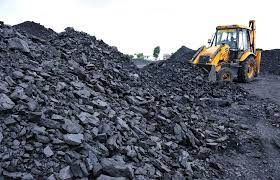Paris September 30 2021: China needs to cut demand for coal by more than 80% by 2060, oil by around 60% and natural gas by more than 45% in order to realize its commitment of carbon neutrality by 2060, while renewables-based power generation, mainly wind and solar PV, needs to increase sevenfold between 2020 and 2060, the International Energy Agency, or IEA, said in its report on the carbon neutrality roadmap for China’s energy sector on Sept. 29.
The Paris-based energy think tank said while its roadmap is China-specific, it has implications for coping with climate changes on a global scale, as China alone accounts for nearly one-third of global greenhouse gas emissions, and the country’s energy sector is the source of almost 90% of its greenhouse gas emissions.
A L S O || R E A D
New oil price spikes possible in October before return toward USD 70 per barrel: Platts Analytics
“There is no plausible path to limiting the global temperature rise to 1.5 °C without China,” IEA highlighted in the roadmap, which was developed in response to the Chinese government’s invitation to the IEA to cooperate on long-term strategies by setting out pathways for reaching carbon neutrality in the country’s energy sector.
Decarbonizing emission-intensive sectors
The baseline scenario in this roadmap, called the Announced Pledges Scenario, or APS, reflects what needs to be done by China to peak its carbon emissions by 2030 and reach carbon neutrality by 2060, especially decarbonization strategies for the most emission-intensive sectors: power, industry, building and transportation.
A power sector dominated by renewables provides the foundation for China’s clean energy transition, the roadmap emphasized.
The roadmap said China’s power sector is expected to achieve net zero CO2 emissions before 2055, and renewables-based generation, mainly wind and solar PV, will account for around 80% of generation by 2060. In contrast, the share of coal is anticipated to drop from over 60% to just 5%, and unabated coal-based generation will stop in 2050, according to IEA’s analysis.
A L S O || R E A D
OPPO To Establish R&D Center For Transfer Of Technology And Skill Development Of IT
China’s industrial sectors’ collective CO2 emissions are expected to decline by nearly 95% and unabated coal use by around 90% by 2060, with the residual emissions being offset, according to the roadmap. IEA projected energy efficiency improvements and electrification will drive most of the industrial emissions reductions in the short term, while emerging innovative technologies, such as hydrogen and carbon capture, utilization, and storage, or CCUS, will take over after 2030.
In the buildings sector, direct CO2 emissions are expected to drop by more than 95% by 2060 through electrification, clean district heating and energy efficiency improvement, the roadmap showed.
In China’s transportation sector, new investment in metro, light-rail and electric buses in cities, and high-speed rail between cities, will play the key role in lowering the energy intensity of passenger trips, IEA said, adding that emissions reductions in road freight, shipping and aviation will come from fuel efficiency gains and the use of low-carbon fuels.
IEA also highlighted that hydrogen will play an increasingly important role in China’s decarbonization across various sectors. By 2060, almost one-fifth of electricity will be used to generate hydrogen.
In terms of investments, to fulfill the carbon neutrality pledge, China will require total annual investment to reach $640 billion (around Yuan 4 trillion) in 2030 and nearly $900 billion (Yuan 6 trillion) in 2060, almost a 60% increase relative to recent years, IEA said.
Potential for further acceleration
The roadmap also proposed an Accelerated Transition Scenario, or ATS, for China, which requires accelerated policy progress, resulting in a faster decline in coal use in power and industry, stronger deployment of existing low-carbon technologies, and more rapid efficiency gains.
The cumulative investments in the ATS will be similar to those in the APS, IEA said, adding that faster progress is possible and beneficial for China.
China has committed in the latest 14th Five-Year Plan to achieve an 18% reduction in CO2 intensity and a 13.5% reduction in energy intensity by 2025. There is also a non-binding proposal to raise the non-fossil fuel share of total energy consumption to 20% by 2025 from around 16% in 2020.
If China achieves these short-term policy targets, IEA projected China’s CO2 emissions from fuel combustion will be on track to plateau in the mid-2020s, which is earlier than China’s 2030 carbon peaking pledge.
IEA said early action leaves more time for markets to adjust as well as for businesses and consumers to adapt. Nevertheless, the longer-term transition challenge will also be more profound under the accelerated scenario.
IEA pointed out reaching net zero CO2 emissions as soon as 2050 would imply that the installed capacity of solar PV and wind would be around 1,400 GW, or 20%, higher than it is in the baseline APS scenario in 2050.










